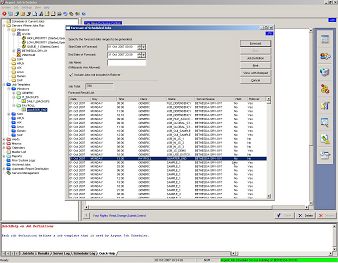Rollover
Rollover is a crucial concept. By default, Rollover occurs everyday at midnight. You can change the time of Rollover in the System Configuration screen of the Argent Scheduler, although this is not recommended – loading all the new day’s jobs at the start of the new day is the most straightforward approach.
Rollover is the crux of any job scheduling system; it allows you to define a schedule for a job and gives you peace of mind knowing this job will run everyday it should, without your intervention. Without Rollover, you would be forced to submit jobs to the schedule everyday — tedious and error-prone, especially if there are hundreds of jobs to be run.
By default, at midnight all new jobs to be run in the next 24 hours appear in the schedule. This is the product’s automation at work; any regular job defined in Rollover will be automatically placed in the schedule on its given days.
Remember, by default, jobs are included in Rollover; you must manually specify otherwise.
If a job is not included in a Rollover, it is called an ‘ad-hoc’ job – you manually submit ad-hoc jobs (usually via a right-click and choosing Submit Job To Schedule.) While this is fine for testing, reliance on this feature defeats the purpose of Rollover and automation; in the Argent Scheduler you should not have to submit jobs every day since that is the scheduler’s task.
After you have completed the testing phase of a job, you then define its schedule via the Argent Calendars. The Job Forecast feature allows you to see the projected schedule, so you can ensure jobs follow the schedule you intended.
